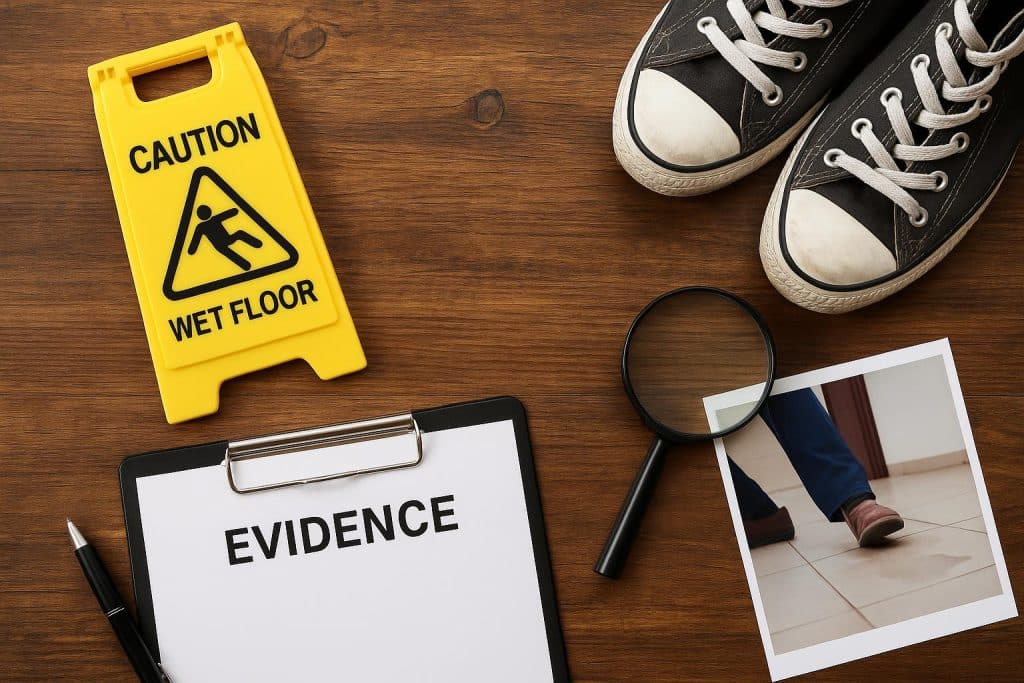Long Island has a unique rhythm: busy downtown sidewalks, suburban shopping centers, ferry terminals, and community parks where people navigate daily life with little thought. Yet, a simple moment, such as stepping on a wet grocery store floor or uneven pavement on a boardwalk, can lead to a sudden fall and an unexpected injury. When this happens, individuals may face medical appointments, pain, missed work, and a sense of confusion about what to do next.
Determining how the incident occurred and whether property owners could have prevented it becomes a central concern. In such situations, evidence plays a crucial role in determining what happened and who may be responsible. Attorneys who handle these matters review details such as reports filed at the scene, photographs, video footage, witness accounts, medical records, and even records showing whether property owners maintained it. A Long Island slip and fall lawyer may walk clients through these forms of documentation to show what contributed to the incident and why.
Incident Reports
Shortly after a slip-and-fall incident occurs, authorities typically file an official report. These documents contain the most crucial information, such as the time and place. The reports may contain initial witness statements and condition descriptions. Attorneys use these records to establish the fundamental facts of what happened during the incident. A report with accurate details can help corroborate the injured person’s account of events.
Photographs and Videos
Photographic evidence is crucial in slip-and-fall cases. Photos documenting the scene’s conditions, such as the state of the floor or a cracked pavement, may help support your claim. Sometimes, a security camera video can capture events in precise detail. Its purpose helps lawyers illustrate what the danger was like and how it caused the incidents. Using images and videos helps ease the situation for others.
Witness Statements
Eyewitness accounts provide an independent perspective. People who saw the event can describe what they observed before, during, and after the fall. Statements from bystanders help confirm essential details, such as the presence of warning signs or the actions of staff. Lawyers often interview witnesses soon after the incident to capture fresh memories. Consistent accounts can strengthen the injured person’s case.
Medical Records
Some injuries are severe enough that the patient receives medical care, which is documented shortly after the fall. These notes from doctors and other healthcare providers about the harm endured during treatment are crucial. In the legal world, lawyers use these documents to connect the dots between the injuries and the event. Thorough documentation supports the allegation that the injury is related to the actual fall. It also includes the steps taken to treat and recover from the injury.
Maintenance Logs
If you own property, you need to ensure that the spaces are safe for anyone visiting. Cleaning or repair records indicate when owners performed maintenance. Those logs can indicate whether severe conditions persisted for an extended period or if property owners promptly addressed the issue. Lawyers review these records to ensure that property owners followed the proper procedure. A lack of maintenance logs or documentation of maintenance can help prove negligence.
Weather Reports
Falls in the outdoors may be related to the climate. Credible weather forecast reports can verify the presence of rain, snow, or ice at the time of the accident. Lawyers use the information to prove whether the weather contributed to the risk. Precise meteorological data provide a context for understanding why a given surface may be slippery or hazardous. Similarly, this evidence can demonstrate how well property owners handled the situation.
Expert Opinions
Safety or medicine practitioners can provide some insight. Safety inspectors may inspect the site to ensure it meets proper conditions. Experts examine the injuries and give the possible causes. These opinions offer an independent evaluation that attorneys will rely on. More often than not, expert analysis clarifies the technical issues for judges and juries.
Clothing and Footwear
The injured person’s clothing and footwear can take on crucial relevance. Footwear with sufficient tread may eliminate careless walking as a reason. Clothing that is torn or stained may help prove that a fall took place. An attorney may request that clients save any clothing worn during the incident, regardless of its appearance. This evidence can provide insight into how the event unfolded.
Policies and Procedures
Comprehensive policies about safety and cleaning indicate whether the property owner is doing what they are supposed to do. Lawyers typically want to review these documents to determine whether the appropriate procedures were in place. If policies have been ignored or seem outdated, it can indicate that safety was not a priority. Current and well-followed procedures may complicate fault-proofing.
Conclusion
Attorneys employ various methods to substantiate their clients’ narratives. A claim begins with an incident report, visual evidence, and witness statements. If medical experts examine injuries in a hospital, medical reports will then link those injuries to the unsafe condition or poor maintenance. They also leverage information about weather data, editorial reviews, and even clothing details. Knowing what kind of proof is most often collected can help those implicated in these cases prepare and protect their clients’ interests.
